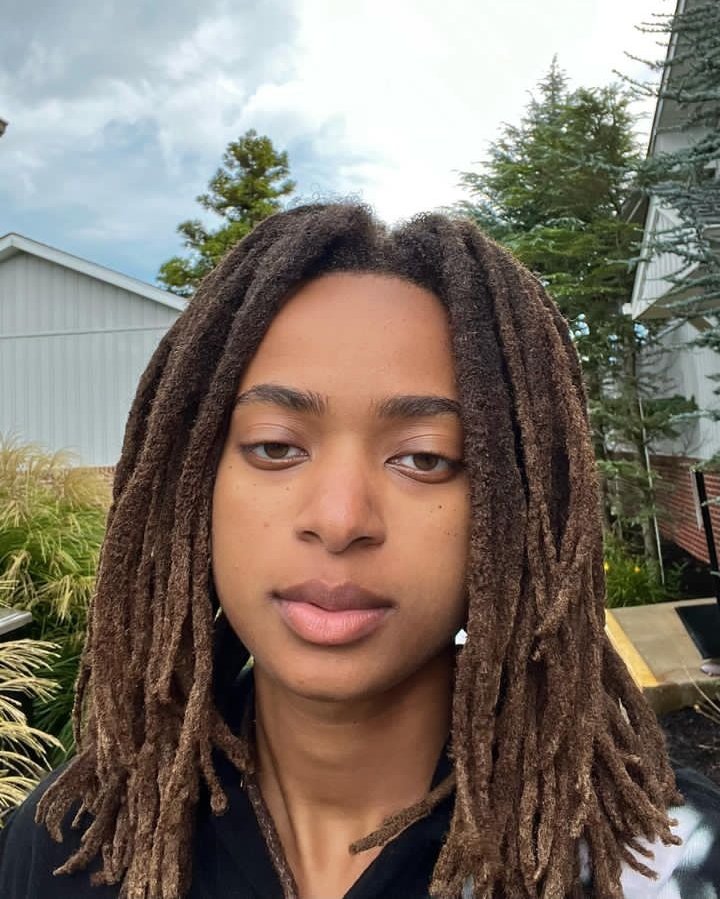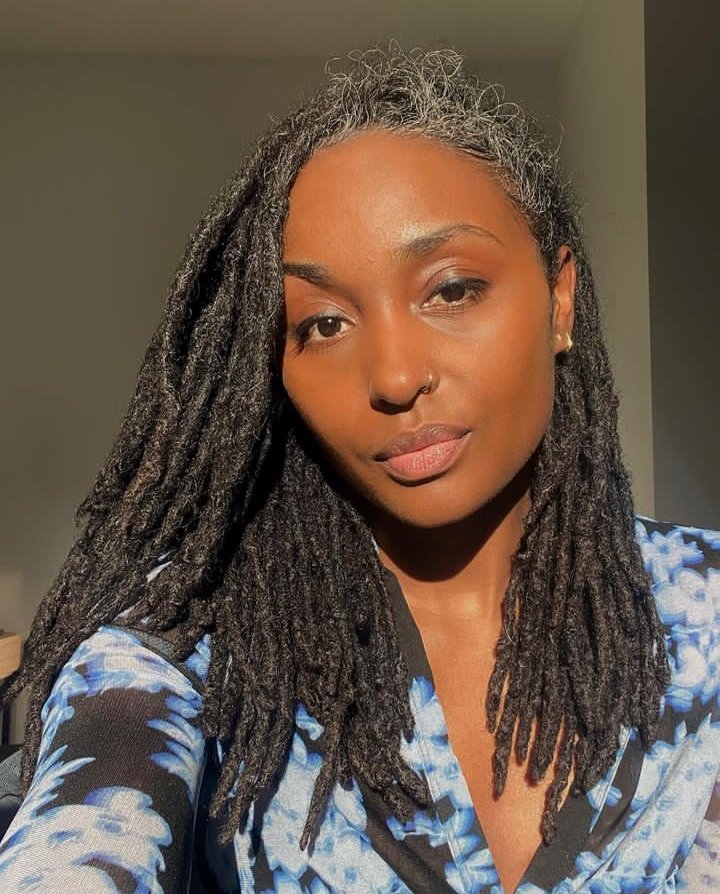African Braids
How to Maintain Your Free-Form Dreads – 9 Easy Tips
Dreadlocks, also known as dreads or locks, have become a popular hairstyle for those looking for a low-maintenance, unique look. However, maintaining free-form dreads can be a bit tricky and requires a bit of patience and care. In this article, we will discuss some tips and tricks for keeping your free-form dreads looking neat and healthy.
What are Free form dreads?

Free-form dreads are a type of dreadlocks that are formed naturally, without the use of any chemical treatments or manipulation such as backcombing or twisting. The hair is allowed to mat and knot on its own, typically with the use of just wax or other natural locking agents. This method can take longer for the hair to form into dreadlocks, but it allows for a more natural and organic look. Because free-form dreads are formed naturally, they may not have the same uniform shape or size as traditional dreadlocks.
Dreadlocks have a rich history and cultural significance that dates back thousands of years. They have been worn by many different cultures and religions around the world, including ancient Egyptians, Rastafarians, and Hindus.
In ancient Egypt, dreadlocks were worn by holy men and women as a symbol of their devotion to the gods. The style was also associated with the god of wisdom, knowledge, and writing – “Thoth”.
In Rastafarianism, dreadlocks are worn as a symbol of the lion of Judah, and as a statement of resistance against Babylon (the materialistic society). Rastafarians believe that dreadlocks are a symbol of their African heritage and identity, and the style is closely tied to the Rastafarian religious and cultural identity.
Hindu holy men, known as sadhus, also wear dreadlocks as a symbol of their renunciation of the material world and their devotion to a spiritual path.
In more recent history, dreadlocks have been worn by activists and counterculture figures as a symbol of rebellion and nonconformity. It is often associated with the Afrocentric and Black rights movement, and as a way to celebrate and reclaim the history and culture of black people.
For those who want to culturally represent but do not want to fully commit to dreads, faux locs came to the rescue, and with adequate maintenance faux locs can be longer lasting.
Quick Tips on How to Maintain Free-form Dreads

Maintaining free-form dreads requires a bit of patience and care to keep them looking neat and healthy. Here are some tips to help you maintain your free-form dreads:
1. Keep them clean
Washing dreads follows a similar process as washing braids. Use a gentle, residue-free shampoo to regularly wash your dreads and stay away from anything with harsh chemicals. It’s critical to maintain a clean scalp because a buildup of oils and grime can cause itchiness and stink.
Wetting your dreads in lukewarm water is the first step in the straightforward procedure of washing your dreads. Once that is done, use a small bit of shampoo directly on the scalp and gently work it in until it lathers. After that, thoroughly rinse your hair and then use a conditioner to provide your locs the moisture they require to grow healthy hair. Apply a conditioner, then allow it to sit for three to five minutes.
A leave-in conditioner is the third and final step in the wash process and is essentially important as it provides all-day-lasting hydration.
2. Dry them properly
Make sure to completely dry your dreads after washing. To remove extra moisture from the dreads, use a microfiber towel; alternatively, let the air dry.
Air drying is fantastic, but if the dreads aren’t entirely dry, they can become a haven for bacteria and fungi that cause dandruff, acne, and mildew odors as well as cause scalp disorders. Sit on a bonnet dryer to completely dry the dreads.
To prevent harming your locs or dreads, heat styling should be kept to a minimum.
3. Be gentle
Care and caution should be exercised when it comes to handling free-form dread. Refrain from combing or brushing your dreads, as this can undo the locking process. Instead, use your fingers to separate and smooth out any tangles or knots.
4. Use a lock wax or gel
A small amount of wax or gel can be used to help maintain the shape of your dreads and keep them from unraveling. With wax or gel, that inevitably leads to build-up and would require a consistent wash routine.
5. Be patient
Be patient as they develop and take shape; free-form dreads take time to form and mature. The amount of time it takes for the hair to lock is not known with certainty. The rate of hair growth varies from person to person.
Longer hair typically takes longer to develop because dreads require more kinking and shrinking before they can lock up. Coarse, and curly hair locks up more quickly than fine, thin, and straight hair due to its naturally textured and prone to matting up.
6. Avoid tight hairstyles
Avoid tight hairstyles, such as ponytails or braids, as they can cause tension in your dreads and cause them to unravel.
7. Trim and separate the dreads
You might need to trim the ends of your dreads as they grow to keep them appearing tidy and wholesome. To do this, grasp both portions and slowly pull them apart, beginning at the bottom and working your way up toward the scalp.
Alternatively, you can use your finger to draw a line along the scalp to indicate where two dreadlocks should be permanently separated. Then, hook it underneath the hair at the point where the line crosses over into the other section and give it a pull from the scalp away from the head.
8. Keep the dreads moisturized
Wearing dreads does not eliminate the requirement for moisturizing therapy. Your hair’s health should come first. To keep your free-form dreads moisturized, particularly at the ends, use a mild oil or moisturizer.
For their weightless and buildup-free results, light oils like jojoba, almond, argan, and olive oil are suggested. Applying these oils straight to the scalp while massaging will improve blood flow to the hair follicles and hence boost the growth of healthy hair.
9. Clarify with ACV rinse
Use apple cider vinegar and water to rinse the locs to prevent buildup and moisture encrustation. You can thoroughly clean your hair with ACV. It will take out any oily buildup and dirt that may have accumulated in your locs.
Additionally, natural alpha-hydroxy acids found in apple cider vinegar gently exfoliate the scalp and hair, removing dead skin cells and buildup that might result from sweat and/or traditional hair products. This enhances hair look, lessens itching, and enables better styling.
Because apple cider vinegar has antiviral, antifungal, and antibacterial characteristics, it can provide relief for people who suffer from scalp-related problems like dandruff. Aside from having antimicrobial properties, apple cider vinegar also has anti-inflammatory properties that can help reduce skin inflammation brought on by dandruff and dry, flaky scalp.
Warm water should fill the basin about 3/4 of the way. Pour one cup of baking soda into your basin along with the essential oils and half of the apple cider vinegar. Stir the ingredients together. Your locs should soak for 10 to 15 minutes after being submerged in the basin.
Squeeze your locs every so often to let the buildup out. Thoroughly rinse with cold water.


